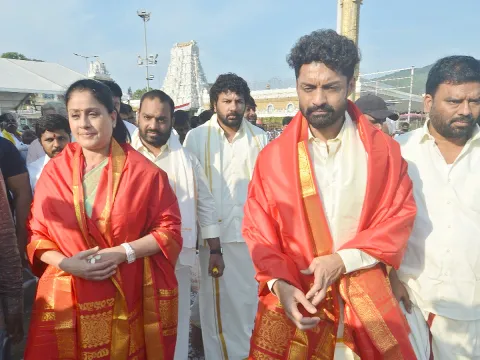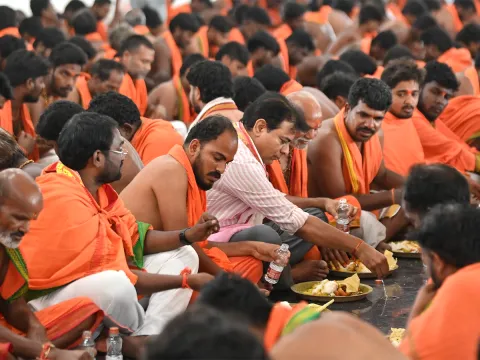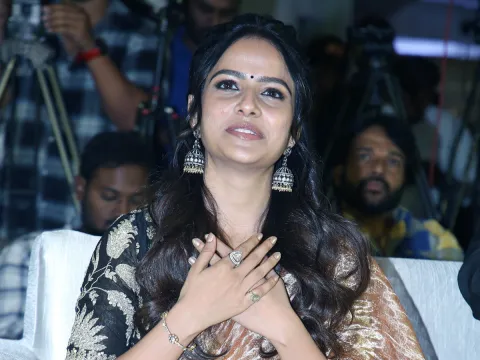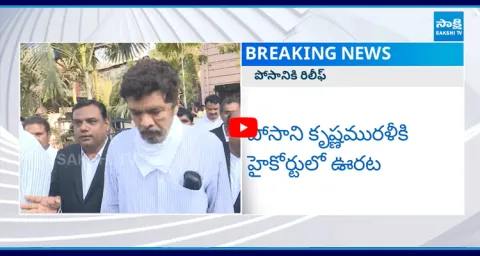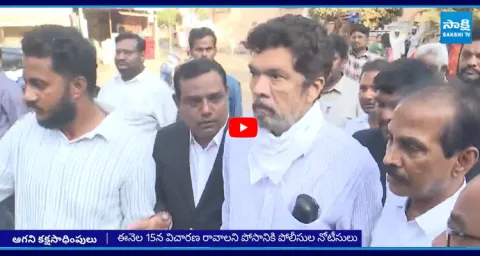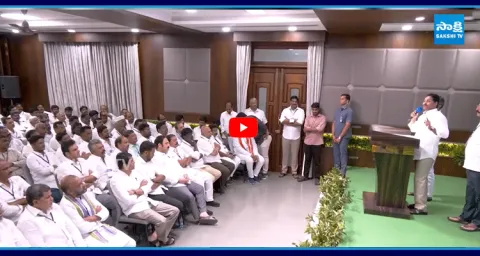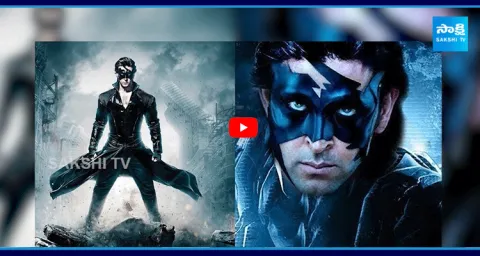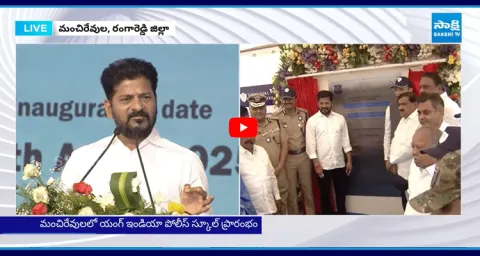యూనియన్ పబ్లిక్ సర్వీస్ కమిషన్ (యూపీఎస్సీ) సివిల్ సర్వీసెస్ ప్రిలిమినరీ పరీక్ష ఫలితాలను వెల్లడించింది.
యూనియన్ పబ్లిక్ సర్వీస్ కమిషన్ (యూపీఎస్సీ) సివిల్ సర్వీసెస్ ప్రిలిమినరీ పరీక్ష ఫలితాలను వెల్లడించింది. ఈ ఏడాది ఆగస్టు 24న నిర్వహించిన ప్రిలిమ్స్ పరీక్షకు దేశవ్యాప్తంగా 4.52 లక్షల మంది అభ్యర్థులు హాజరవ్వగా.. 16,933 మంది ప్రధాన పరీక్షలకు అర్హత సాధించారు. సివిల్స్ మెయిన్ పరీక్షలు డిసెంబరు 14 నుంచి ప్రారంభం కానున్నాయి. ఏ పోటీ పరీక్షకు సంసిద్ధమయ్యే అభ్యర్థులకైనా గత ప్రశ్నపత్రాలను పరిశీలిస్తూ అధ్యయనం చేయడం ఎంతో ప్రయోజనకరం. అంతేకాకుండా సివిల్స్ మెయిన్లో మార్పులు ప్రవేశ పెట్టిన తర్వాత రెండోసారి నిర్వహిస్తున్న పరీక్షలివి. ఈ నేపథ్యంలో అభ్యర్థుల ప్రయోజనార్థం సివిల్ సర్వీసెస్ మెయిన్ 2013 ప్రశ్నపత్రాలను అందజేస్తున్నాం...
Essay
(Compulsory)
Time Allowed: Three Hours Maximum Marks: 250
Question Paper Specific Instructions
Please read each of the following instructions carefully before atte-mpting questions:
n The Essay must be written in the medium authorized in the Admission Certificate which must be stated clearly on the cover of this Question - Cum - Answer (QCA) Booklet in the space provided. No marks will be given for answers written in medium other than the authorized one.
n Word limit, as specified should be adhered to.
n Any page or portion of the page left blank in the answer book must be clearly struck off.
Write an essay on any ONE of the following topics in NOT MORE than 2500 words. 250 Marks
1. Be the change you want to see in others - Gandhiji.
2. Is the Colonial mentality hindering India's success?
3. GDP (Gross Domestic Product) along with GDH (Gross Domestic Happiness) would be the right indices for judging the well being of a country.
4. Science and Technology is the panacea for the growth and security of the nation.
GENERAL STUDIES (PAPER-I)
Time Allowed: Three Hours
Maximum Marks: 250
Question Paper Specific Instructions
Please read each of the following instructions carefully before attempting questions:
n There are Twenty-Five Questions Printed both in Hindi and in English.
n All questions are compulsory.
n The number of marks carried by a question / part is indicated against it.
n Answers must be written in the medium authorized in the Admission Certificate which must be stated clearly on the cover of this Question - Cum - Answer (QCA) Booklet in the space provided. No marks will be given for answers written in medium other than the authorized one.
n Word limit in questions, if specified, should be adhered to.
n Any page or portion of the page left blank in the Question-Cum-Answer Booklet must be clearly struck off.
Answer the questions in NOT MORE than the word limit specified for each in the parenthesis. Content of the answer is more important than its length.
1. Though not very useful from the point of view of a connected political history of South India, the Sangam literature portrays the social and economic conditions of its time with remarkable vividness. Comment. (200 words). 10 Marks
2. (a) Discuss the 'Tandava' dance as recorded in early Indian inscri-ptions. (100 words) 5 Marks
(b) Chola architecture repres-ents a high watermark in the evolution of temple architecture. Discuss. (100 words) 5 Marks
3. Defying the barriers of age, gender and religion, the Indian women became the torch bearer during the struggle for freedom in India. Discuss. (200 words) 10 Marks
4. Several foreigners made India their homeland and participated in various movements. Analyze their role in the Indian struggle for freedom. (200 words) 10 Marks
5. ''In many ways, Lord Dalhousie was the founder of modern India.'' Elaborate. (200 words) 10 Marks
6. Critically discuss the objectives of Bhoodan and Gramdan Movements initiated by Acharya Vinoba Bhave and their success.
(200 words) 10 Marks
7. Write a critical note on the evolution and significance of the slogan, 'Jai Jawan Jai kisan'.
(200 words) 10 Marks
8. Discuss the contributions of Maulana Abul Kalam Azad to pre and post independent India.
(200 words) 10 Marks
9. Analyze the circumstances that led to the Tashkent Agreement in 1966. Discuss the highlights of the Agreement. (200 words)
10. Critically examine the compulsions which prompted India to play a decisive role in the emergence of Bangladesh. (200 words) 10 Marks
11. " 'Latecomer' Industrial Revolution in Japan involved certain factors that were markedly different from what West had experienced". Analyze. (200 words) 10 Marks
12. "Africa was chopped into States artificially created by accidents of European competition." Ana-lyze. (200 words) 10 Marks
13. "American Revolution was an economic revolt against mercantilism." Substantiate. (200 words) 10 Marks
14. What policy instruments were deployed to contain the Great Economic Depression? (200 words) 10 Marks
15. Discuss the various social problems which originated out of the speedy process of urbanization in India. (200 words) 10 Marks
16. "Male membership needs to be encouraged in order to make women's organization free from gender bias." Comment. (200 words) 10 Marks
17. Critically examine the effect of globalization on the aged population in India. (200 words) 10 Marks
18. Growing feeling of regionalism is an important factor in generation of demand for a separate State. Discuss. (200 words) 10 Marks
19. (a) What do you understand by the theory of 'continental drift'? Discuss the prominent evidences in its support.
(100 words) 5 Marks
(b) The recent cyclone on east coast of India was called 'Phailin'. How are the tropical cyclones named across the world? Elaborate.
(100 words) 5 Marks
20. (a) Bring out the causes for the formation of heat islands in the urban habitat of the world.
(100 words) 5 Marks
(b) What do you understand by the phenomenon of 'temperature inversion' in meteorology? How does it affect weather and the habitants of the place? (100 words) 5 Marks
21. Major hot deserts in northern hemisphere are located between 20-30 deg N latitudes and on the western side of the continents. Why? (200 words) 10 Marks
22. (a) Bring out the causes for more frequent occurrence of landslides in the Himalayas than in the Western Ghats.(100 words) 5 Marks
(b) There is no formation of deltas by rivers of the Western Ghats. Why? (100 words) 5 Marks
23. (a) Do you agree that there is a growing trend of opening new sugar mills in southern States of India? Discuss with Justification. (100 words) 5 Marks
(b) Analyze the factors for the highly decentralized cotton textile industry in India.(100 words) 5 Marks
24. With growing scarcity of fossil fuels, the atomic energy is gaining more and more significance in India. Discuss the availability of raw material required for the generation of atomic energy in India and in the world. (200 words) 10 Marks
25. It is said that India has substantial reserves of shale oil and gas, which can feed the needs of the country for quarter century. However, tapping of the resource does not appear to be high on the agenda. Discuss critically the availability and issues involved.
(200 words) 10 Marks
General Studies (Paper-II)
Time: Three Hrs Max.Marks: 250
Question Paper
Specific Instructions
Please read each of the following instructions carefully before atte-mpting questions
n There are Twenty-Five Questions Printed both in Hindi and English.
n All questions are compulsory
n The number of marks carried by a question/ part is indicated against it.
n Answers must be written in the medium authorized in the Admission Certificate which must be stated clearly on the cover of this Question - Cum - Answer (QCA) Booklet in the space provided. No marks will be given for answers written in medium other than the authorized one.
n Word limit in questions, if speci-fied, should be adhered to.
n Any page of portion of the page left blank the Question-Cum-Answer Booklet must be clearly struck off.
Answer the questions in NOT MORE than the word limit specified at the end of each question in the parenthesis. Content of the answer is more important than its length.
1. The role of individual MPs (Member of Parliament) has di-minished over the year and as a result healthy constructive deb-ates on policy issues are not usually witnessed. How far can this be attributed to the anti-de-fection law which was legislated but with a different intention?
(200 words) 10 Marks
2. Discuss Section 66A of IT Act, with reference to its alleged violation of Article 19 of the Constitution.
(200 words)10 Marks
3. Recent directives from Ministry of Petroleum and Natureal Gas are preceived by the 'Nagas' as a threat to override the exceptional status enjoyed by the State. Discuss in light of Article 371A of the Indian Constitution.
(200 words) 10 Marks
4. "The Supreme Court of India keeps a check on arbitrary power of the Parliament in amending the Constitution' Discuss critically.
(200 words) 10 Marks
5. Many State Government further bifurcate geographical administrative areas like Districts and Talukas for better governance. In light of the above, can it also be justified that more member of smaller states would bring in effective governance at State level? Discuss. (200 words) 10 Marks
6. Constitutional mechanisms to resolve the interstate water disputes have failed to address and solve the problems. Is the failure due to structural or pro-cess inadequacy or both? Dis-cuss. (200 words) 10 Marks
7. Discuss the recommendations of the 13th Finance Commission which have been a departure from the previous commissions for strengthening the local government finances.
(200 words) 10 Marks
8. The product diversification of financial institutions and insu-rance companies, resulting in overlapping of products and ser-vices strengthens the case for the merger of the two regulatory agencies, namely SEBI and IRDA justify.
(200 words) 10 Marks
9. The concept of Mid Day Meal (MIDM) scheme is almost a century old in India with early beginnings in Madras Presidency in preindependent India. The scheme has again been given impetus in most states in the last two decades. Critically examine its twin objectives, latest mandates and success.
(200 words) 10 Marks
10. Pressure group politics is sometimes seen as the informal face of politics. With regards to the above, assess the structure and functioning of pressure groups in India.
(200 words) 10 Marks
11. The legitimacy and accountabi-lity of Self Help Groups (SH Gs) and their patrons, the micro-finance outfits, needs systematic assessment and scrutiny for the sustained success of the concept. Discuss.
(200 words) 10 Marks
12. The Central Government frequency complains on the poor performance of the State Governments in eradicating suffering of the vulnerable sections of the society. Restructuring of Centrally sponsored schemes across the sectors for ameliorating the cause of vulnerable sections of population aims at providing flexibility to the States in better implementation. Critically evaluate. (200 words) 10 Marks
13. Electronic cash transfer system for the welfare schemes is an ambitious project to minimize corruption, eliminate wastage and facilitate reforms. Comment. (200 words) 10 Marks
14. The basis of providing urban amenities in rural areas (PURA) is rooted in establishing conne-ctivity. Comment.
(200 words) 10 Marks
15. Identify the Millennium Development Goals (MDGs) that are related to health. Discuss the success of the actions taken by the government for achieving the same.
(200 words) 10 Marks
16. Though Citizens charters have been formulated by many public service delivery organizations, there is no corresponding improvement in the level of citizen's satisfaction and quality of services being provided. Analyze.
(200 words) 10 Marks
17. "A national Lokpal, however strong it may be, cannot resolve the problems of immorality in public affairs." Discuss.
(200 words) 10 Marks
18. The proposed withdrawal of International Security Assistance Force (ISAF) from Afghanistan in 2014 is fraught with major security implications for the countries of the region. Examine in light of the fact that India is faced with a plethora of challenges and needs to safeguard its own strategic interests.
(200 words) 10 Marks
19. What do you understand by "The String of Pearls"? How does it impact India? Briefly outline the steps taken by India to counter this.
(200 words) 10 Marks
20. Economic ties between India and Japan while growing in the recent years are still far below their potential. Elucidate the policy constraints which are inhi-biting this growth.
(200 words) 10 Marks
21. The protests in Shahbag Square in Dhaka in Bangladesh reveal a fundamental split in society between the nationalists and Islamic forces. What is its significance for India?
(200 words) 10 Marks
22. Discuss the political develop-ments in Maldives in the last two years. Should they be of any cause of concern to India?
(200 words) 10 Marks
23. In respect of India-Sri Lanka relations, discuss how domestic factors influence foreign policy.
(200 words) 10 Marks
24. What is meant by Gujral do-ctrine? Does it have any rele-vance today? Discuss.
(200 words) 10 Marks
25. The World Bank and the IMF, collectively known as the Bretton Woods Institutions, are the two intergovernmental pillars supporting the structure of the world's economic and financial order. Superficially, the World Bank and the IMF exhibit many common characteristics, yet their role, functions and mandate are distinctly different. Elucidate.
(200 words) 10 Marks
GENERAL STUDIES
(PAPER-III)
Time Allowed: Three Hours
Maximum Marks: 250
Question Paper Specific Instructions
Please read each of the following instructions carefully before attempting questions:
n There are Twenty-Five Questions Printed both in Hindi and in English.
n All questions are compulsory.
n The number of marks carried by a question / part is indicated against it.
n Answers must be written in the medium authorized in the Admission Certificate which must be stated clearly on the cover of this Question - Cum - Answer (QCA) Booklet in the space provided. No marks will be given for answers written in medium other than the authorized one.
n Word limit in questions, wherever specified, should be adhered to.
n Any page or portion of the page left blank the Answer book must be clearly struck off.
Answer questions in NOT MORE than the word limit specified at the end of each question in the parentheses. Content of the answer is more important than its length.
1. With a consideration towards the strategy of inclusive growth, the new Companies Bill, 2013 has indirectly made CSR a mandatory obligation. Discuss the challenges expected in its implementation in right earnest. Also discuss other provisions in the Bill and their implications. (200 words)
10 Marks
2. What were the reasons for the introduction of Fiscal Responsi-bility and Budget Management (FRBM) Act, 2003? Discuss cri-tically its salient features and their effectiveness. (200 words) 10 Marks
3. What is the meaning of the term 'tax expenditure'? Taking housing sector as an example, discuss how it influences the budgetary policies of the government.
(200 words) 10 Marks
4. Food Security Bill is expected to eliminate hunger and malnutrition in India. Critically discuss various apprehensions in its effective implementation along with the concerns it has generated in WTO. (200 words) 10 Marks
5. What are the different types of agriculture subsidies given to farmers at the national and at state levels? Critically analyze the agricultural subsidy regime with reference to the distortions created by it.
(200 words) 10 Marks
6. India needs to strengthen measures to promote the pink revolution in food industry for ensuring better nutrition and health. Critically elucidate the statements.
(200 words) 10 Marks
7. Examine the impact of libera-lization on companies owned by Indians. Are they competing with the MNCs satisfactorily? Discuss. (200 words) 10 Marks
8. Establish relationship between land reforms, agriculture productivity and elimination of poverty in the Indian economy. Discuss the difficulties in designing and implementation of agriculture - friendly land reforms in India.
(200 words) 10 Marks
9. (a) Discuss the impact of FDI entry into Multi - trade retail sector on supply chain management in commodity trade pattern of the economy. (100 words) 5 Marks
(b) Though India allowed Foreign Direct Investment (FDI) in what is called multi - brand retail through the joint venture route in September 2012, the FDI, even after a year, has not picked up. Discuss the reasons. (100 words) 5 Marks
10. Discuss the rationale for introducing Goods and Services Tax (GST) in India. Bring out critically the reasons for the delay in roll out for its regime.
(200 words) 10 Marks
11. Write a note on India's green energy corridor to alleviate the problem of conventional energy.
(200 words) 10 Marks
12. Adoption of PPP model for infrastructure development of the country has not been free of criti-cism. Critically discuss pros and cons of the model.
(200 words) 10 Marks
13. Bringing out the circumstances in 2005 which forced amendment to the section 3(d) in Indian patent Law, 1970, discuss how it has been utilized by the Supreme Court in its judgement in rejecting Novratis' patent application for 'Glivec'. Discuss briefly the pros and cons of the decision.
(200 words) 10 Marks
14. What do you understand by Fixed Dose Drug Combinations (FDCs)? Discuss their merits and demerits. (200 words) 10 Marks
15. What do you understand by Umpire Decision Review System in Cricket? Discuss its various components. Explain how silicone tape on the edge of a bat may fool the system?
(200 words) 10 Marks
16. (a) What is a digital signature? What does its authentication mean? Give various salient built-in features of a digital signature.
(100 words) 5 Marks
(b) How does the 3D printing technology work? List out the advantages and disadvantages of the technology.
(100 words) 10 Marks
17. (a) What is an FRP composite material? How are they manu-factured? Discuss their applicati-ons in aviation and auto mobile industries. (100 words) 5 Marks
(b) What do you understand by Run-of-river hydroelectricity project? How is it different from any other hydroelectricity project?
(100 words) 5 Marks
18. How important are vulnerability and risk assessment for pre-disaster management? as an administrator, what are key areas that you would focus on in a Disaster Management System. (200 words) 10 Marks
19. What are the consequences of Illegal mining? Discuss the Ministry of Environment and Forest's concept of GO AND NO GO zones for coal mining sector.
(200 words) 10 Marks
20. Enumerate the National Water Policy of India. Taking river Ganges as an example, discuss the strategies which may be adopted for river water pollution control and management. What are the legal provisions of management and handling of hazardous wastes in India?
(200 words) 10 Marks
21. Money laundering poses a serious security threat to a country's economic sovereignty. What is its significance for India and what steps are required to be taken to control this menace?
(200 words) 10 Marks
22. What are social networking sites and what security implications do these sites present?
(200 words) 10 Marks
23. Cyber warfare is considered by some defense analysts to be a larger threat than even Al Queda or terrorism. What do you understand by Cyber warfare? Outline the cyber threats which India is vulnerable to and bring out the state of the country's preparedness to deal with the same.
(200 words) 10 Marks
24. Article 244 of the Indian Const-itution relates to administration of scheduled areas and tribal areas. Analyze the impact of non - implementation of the provi-sions of the Fifth schedule on the growth of Left Wing extremism.
(200 words) 10 Marks
25. How far are India's internal security challenges linked with border management particularly in view of the long porous borders with most countries of South Asia and Myanmar?
(200 words) 10 Marks





